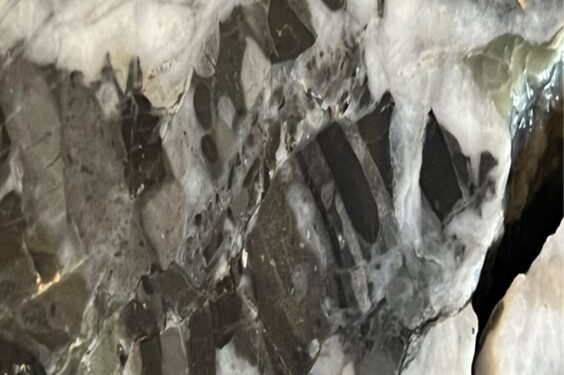GBM Resources Limited (ASX: GBZ) has continued to obtain excellent results from the initial ~ 7,000 m diamond drill programme at the Twin Hills Project 309 Deposit in Queensland.
Drilling is rapidly advancing with 12 of the planned 17 holes completed. A drill programme of 14 holes for ~ 7,000 m at the nearby Lone Sister Deposit is also planned.
GBM’s initial drill programme at Twin Hills is designed to:
1. confirm historic drilling results and data;
2. infill areas of lower drill density drilling to upgrade resource confidence; and
3. importantly provide an initial test of extensions to mineralisation outside of the current resource boundaries 309 Deposit
“Excellent assay results continue to be received for GBM’s first drill program at Twin Hills with numerous high-grade intersections in the first five holes,” Managing Director and CEO, Peter Rohner, said.
|It is very pleasing to start to see significant high-grade intersections outside the existing resource model that remain open along strike. This drilling provides clear evidence for GBM to expand the 309 Deposit resources again following this drill programme.”
Assay Results
More excellent results have been returned for the 309 Deposit drilling program and build on outstanding results of 162 m @ 2.65 g/t Au from 69 m including 16 m @ 13.49 g/t Au from 187 m in 309DD22001 and 79 m @ 1.09 g/t Au from 131 m including 7 m @ 4.41 g/t Au from 152 m in 309DD22002
Assay results from holes 309DD22003 and 005 have returned broad intervals of gold mineralisation with gram x metre (g*m) intersections of 164 and 254 g*m respectively. Drill hole 309DD22003 intersected 148 m @ 1.11 g/t Au and 5.14 g/t Ag from just 26m down hole highlighting the open pit mining potential of the 309 Deposit whilst 309DD22005 returned a peak result of 1m @ 129.39 g/t Au and 55.43 g/t Ag with visible gold from 327 m emphasizing the presence of high-grade mineralization.
Drill hole 309DD22003 intersected: 148 m @ 1.11 g/t Au and 5.14 g/t Ag from 26 m including 6 m @ 3.21 g/t Au and 4.64 g/t Ag from 35 m, 15 m @ 3.96 g/t Au and 12.52 g/t Ag from 118 m and 21.2 m @ 1.6 g/t Au and 3.3 g/t Ag from 182.8 m, including 7 m @ 3.38 g/t Au and 3.88 g/t Ag from 193 m
Gold grades intersected by 309DD22003 are comparable to surrounding drill holes and the estimated resource grade. However, the intersection of 21.2 m @ 1.6 g/t Au and 3.3 g/t Ag from 182.8 m including 7 m @ 3.38 g/t Au and 3.88 g/t Ag from 193 m is double the grades intersected by the adjacent historic hole TRCD384 that returned 39 m @ 0.85 g/t Au from 181 m.
Drill hole 309DD22004 intersected: 12 m @ 1.23 g/t Au and 0.68 g/t Ag from 350 m including 3 m @ 3.2 g/t Au and 1.36 g/t Ag from 350 m and 13 m @ 1.87 g/t Au and 0.69 g/t Ag from 416 m, including 4 m @ 5.31 g/t Au and 1.75 g/t Ag from 417 m.
Drill hole 309DD22004 intersected slightly lower grades than anticipated. But results from 309DD22005 suggests that the mineralisation is higher than anticipated and further to the north. In addition, the intercept of 12 m @ 1.23 g/t Au and 0.68 g/t Ag from 350 m is outside the existing resource model.
Drill hole 309DD22005 intersected excellent results of: 49 m @ 5.18 g/t Au and 2.27 g/t Ag from 310 m, including 2 m @ 66.19 g/t Au and 29.2 g/t Ag from 310 m, 9 m @ 5.07 g/t Au and 1.36 g/t Ag from 337 m , 4 m @ 11.73 g/t Au and 3.03 g/t Ag from 352 m
The results in 309DD22005 are stronger than anticipated with the bulk of the high-grade intersection of 49 m @ 5.18 g/t Au and 2.27 g/t Ag, including the peak assay of 1 m @ 129.39 g/t Au and 55.43 g/t Ag with visible gold located outside the current resource model.
This mineralisation remains open to the west and represents a priority target with clear potential to expand resources at the 309 Deposit.
For further information please visit: https://www.gbmr.com.au/












